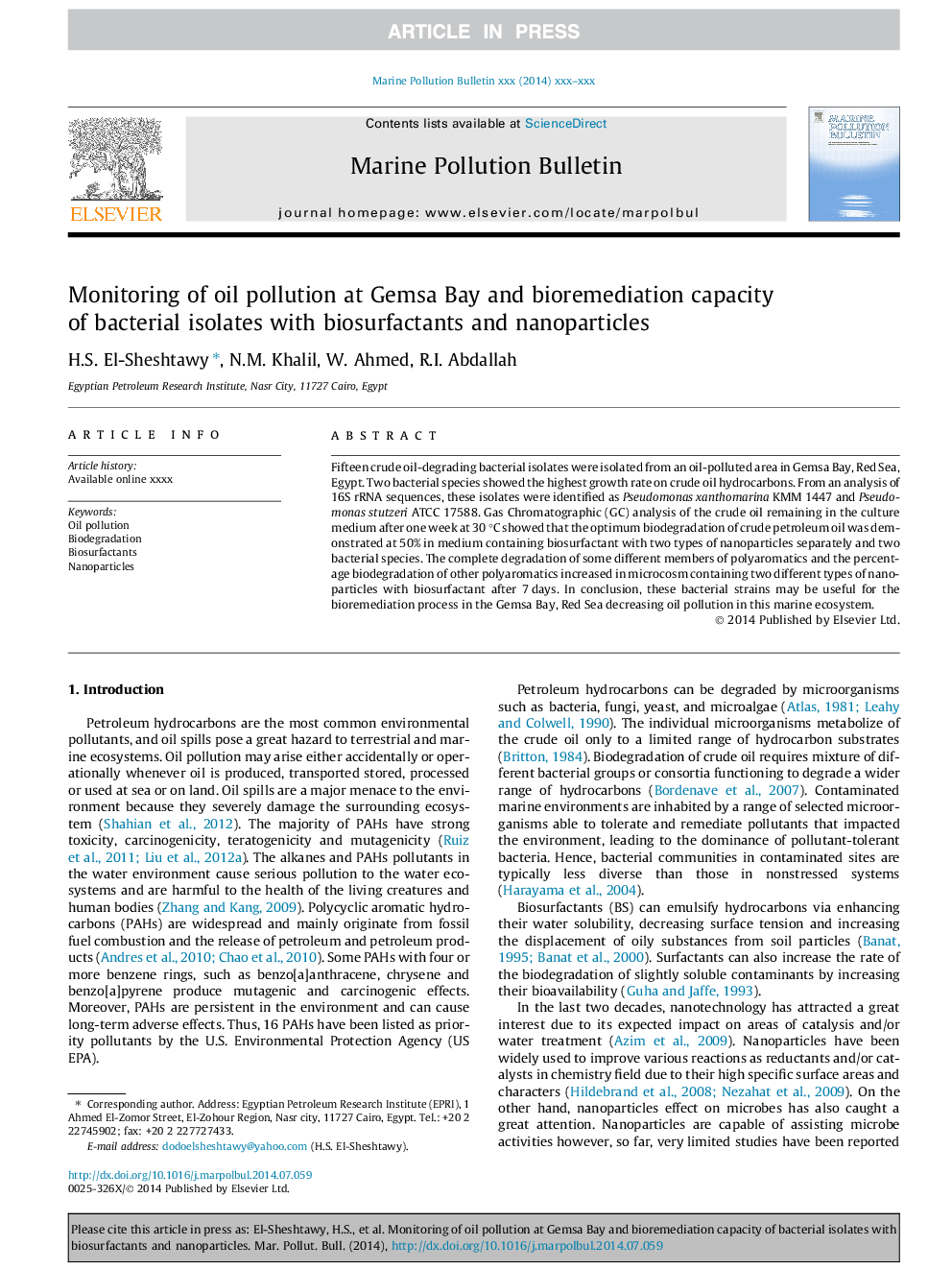| Article ID | Journal | Published Year | Pages | File Type |
|---|---|---|---|---|
| 6357646 | Marine Pollution Bulletin | 2014 | 10 Pages |
Abstract
Fifteen crude oil-degrading bacterial isolates were isolated from an oil-polluted area in Gemsa Bay, Red Sea, Egypt. Two bacterial species showed the highest growth rate on crude oil hydrocarbons. From an analysis of 16S rRNA sequences, these isolates were identified as Pseudomonas xanthomarina KMM 1447 and Pseudomonas stutzeri ATCC 17588. Gas Chromatographic (GC) analysis of the crude oil remaining in the culture medium after one week at 30 °C showed that the optimum biodegradation of crude petroleum oil was demonstrated at 50% in medium containing biosurfactant with two types of nanoparticles separately and two bacterial species. The complete degradation of some different members of polyaromatics and the percentage biodegradation of other polyaromatics increased in microcosm containing two different types of nanoparticles with biosurfactant after 7 days. In conclusion, these bacterial strains may be useful for the bioremediation process in the Gemsa Bay, Red Sea decreasing oil pollution in this marine ecosystem.
Related Topics
Physical Sciences and Engineering
Earth and Planetary Sciences
Oceanography
Authors
H.S. El-Sheshtawy, N.M. Khalil, W. Ahmed, R.I. Abdallah,
